This post may contain affiliate links. I may earn a small commission if you click through them, at no extra cost to you.
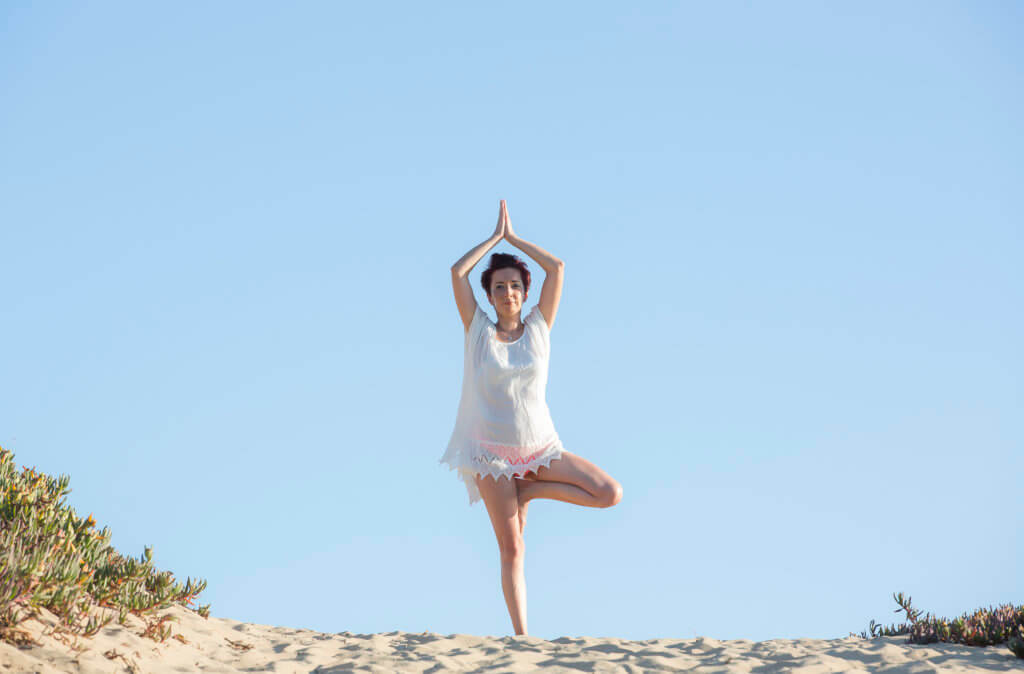
Download a free audio yoga exercise at the end of this article.
When you hear the word yoga you probably think of bendy poses and inverted positions. But there’s more to yoga than meets the eye.
The physical postures, also called asanas, are the most visible and eye-catching part of yoga, but not the only one.
In fact, even though asanas have many physical, mental and emotional benefits, there are other yoga exercises just as powerful.
For many people, asanas, or at least the way asana is portrayed on social media today, can also be intimidating, with many thinking they are not flexible, strong or even thin enough to practice such poses.
I lost count of how many times I’ve heard that as a yoga teacher, and to be honest that’s the same thing as saying you’re too hungry to go to a restaurant, or too sick to go to a doctor.
But the Instagram images of advanced asanas performed by beautiful models on stunning beaches are not helping anyone, and especially not helping yoga. I get it.
On the other hand, sticking to an asana practice can be a challenge if you’re a traveler constantly on the move, or if you just can’t find enough time in a day for everything. If that’s your case, try these quick vinyasa flows for travelers.
The good news is that you can practice yoga anywhere, anytime. And you don’t even need a yoga mat for that, or to wake up before sunrise for that matter.
You can do yoga on airplanes, trains, or buses, or on your way to work. When you’re out there exploring the world, or at home.
It’s really that easy.
The secret to a complete yoga practice is to combine all its techniques, and I highly recommend that.
But it’s also possible to enjoy many yoga benefits, including a more relaxed, stress-free, and focused mind, an increase of self-awareness, and a happier life, with only a few yoga exercises you can easily incorporate in your daily routines and travels.
Read More:
- Top 10 Luxury Yoga Retreats in the World
- Best Yoga Studios Around the World
- 10 Best Travel Yoga Pants: Versatile, Comfy, & Stylish
Yoga Exercises for Travelers:
#1 Pranayama
Pranayama is one of the most powerful yoga exercises.
Pranayama is a Sanskrit word that means expansion of the bioenergy through breathing exercises.
The breath is the source of prana or life energy, and by learning to control it you can increase your levels of energy, reduce anxiety, and improve your general wellbeing.
When you breathe better, bringing more oxygen into your lungs and blood system, you become healthier and more fit, your brain works better and you’re more focused and productive, you feel more energetic but at the same time calm and relaxed, and you live longer.
There’s a wide range of pranayama exercises, but before diving into all of those you should learn how to breathe properly.
Most of us, and I bet you’re no exception, don’t know how to breathe. We breathe only superficially, using just our upper chest.
When we feel stressed and anxious, our breath becomes even shorter and quicker.
If you picture an image of your lungs, you’ll see they have a triangular format, with the upper part being the smallest and the lower part being the largest.
When we breathe only with our upper chest, we bring the air only into the upper area of our lungs, which is the smallest.
Full Yogic Breath
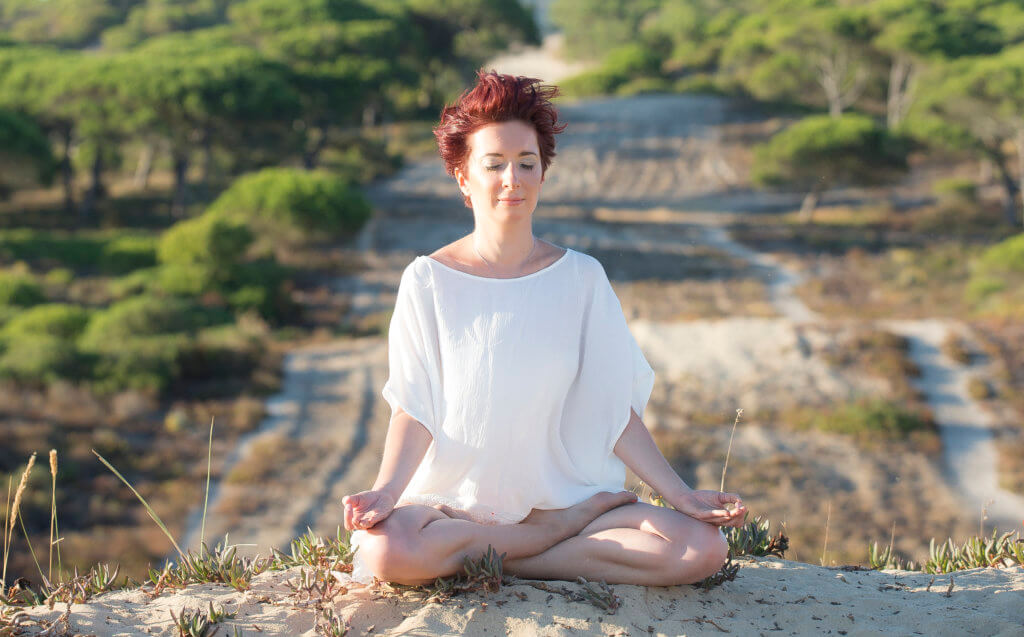
This yoga exercise will teach you how to use all your lungs’ capacity.
You can do it anywhere.
Once you get comfortable with the full yogic breath it will become your default way of breathing.
1. We’ll start by practicing lower or abdominal breathing.
You can do this exercise lying down or sitting in a comfortable position, with your back straight and aligned with your neck and head.
Put your hands on your belly and close your eyes.
Inhale expanding your belly, exhale contracting it.
Remember: When the air comes in, your belly goes out. When the air goes out, your belly comes in.
Breathe always through the nose, softly and deeply.
While breathing with the lower lungs try not to move your mid-torso or your chest, only your stomach.
Tip: Until you’re completely comfortable with the full yogic breath, try using the abdominal breath as your default way of breathing instead of the upper breath.
2. Now move your hands to your rib cage to practice the middle breathing.
This time you should feel your rib cage expanding during inhalation, and shrinking during exhalation.
Use your hands to become more aware of this movement.
Again, move only your mid-torso, not your belly or your chest.
Repeat a few times.
3. Bring your hands to your upper chest, close to your neck, for the upper-chest breathing.
Now, use only your upper lungs, lifting your chest with inhalation, and bringing it down with exhalation.
Make sure to move only your chest, not your mid-torso or stomach.
This one doesn’t need much practice. The point here is to feel the differences between the lower, the middle, and the upper breathing.
Do you notice how much shorter and superficial the upper breathing is when compared with the other two?
Unfortunately, that’s how most of us breathe most of the time before we learn how to do it properly.
It’s also how we breathe when we feel more anxious or stressed, and by perpetuating this pattern we also perpetuate the stress response.
Thoracic breathing also reduces blood oxygenation, causing many health problems.
4. Finally, let’s bring all the previous three stages together for the yogic full breath.
Touch your belly with one hand and your chest with the other one.
Inhale, bringing the air first into the lower area of your lungs, expanding your stomach, then into the middle area, expanding your rib cage, and finally into the upper area, lifting your chest.
Exhale first from the upper area, bringing your chest down, then from the middle area, shrinking your rib cage, and finally from the lower area, contracting your belly.
Congrats!
You are now using all your lungs’ capacity, and bringing more air, oxygen, and energy into your body.
Don’t worry if this feels a bit complicated at first. It will become easier and you’ll feel the benefits in no time.
Read More:
#2 Yoganidra
Yoganidra means yogic sleep and is a guided yoga exercise that induces deep relaxation of both body and mind.
The benefits of yoganidra are many and documented.
If done correctly, a 30-minute yoganidra can be as restorative as a 2-hour sleep, reduce stress and anxiety, and even alleviate post-traumatic stress disorder or depression.
It works by accessing subconscious areas of the mind while you’re still awake and rewiring negative thought patterns.
Even if you fall asleep during yoganidra, your mind will still absorb its positive effects.
Ideally, yoganidra is done lying down, but you can also do it seated if it feels more comfortable for you.
Make sure to keep your body warm during all the exercise, wearing warm clothes and having a blanket over you.
You can do it in a yoga class or yoganidra session, with a teacher, or virtually anywhere with a recorded yoganidra.
I personally like to do it in bed, right before sleeping.
Download a free audio file with a guided yoganidra exercise at the end of this article.
#3 Meditation
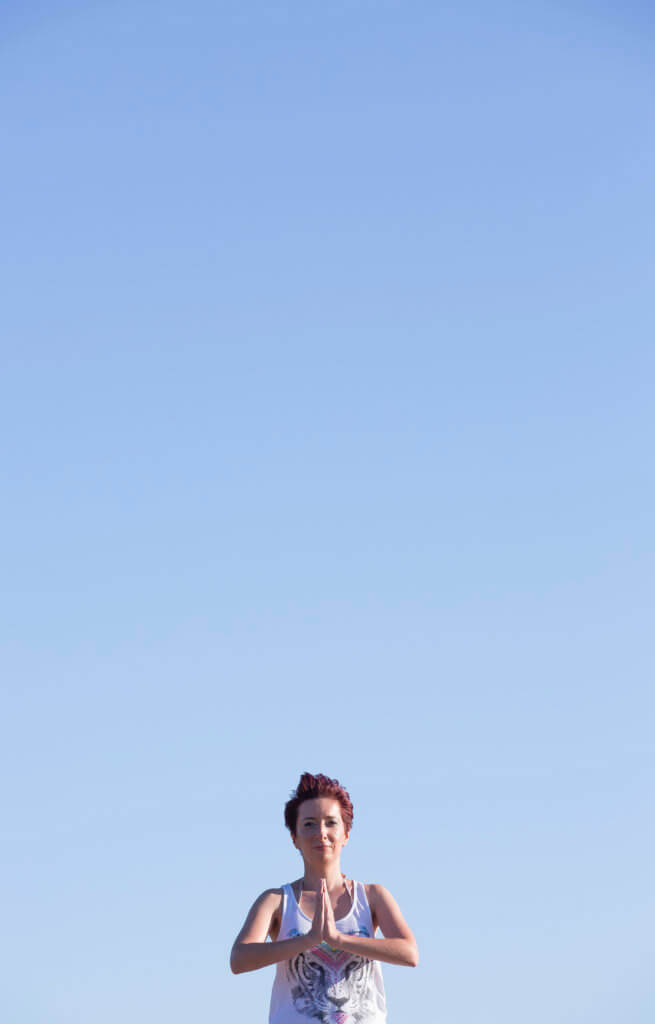
Meditation is one of the most important yoga exercises.
The purpose of meditation is to stop the fluctuations of the mind in order to achieve a state of higher consciousness called samadhi, which is the ultimate goal of yoga.
Not all of us will achieve samadhi.
In fact, only a few will, not because they’re special but because attaining the highest goal of yoga requires a great level of dedication and prolonged and systematic practice.
But all of us can ripe the many benefits of meditation.
As several scientific studies have already demonstrated, when practiced regularly, meditation reduces stress and anxiety, improves concentration, awareness, and general functioning of your brain, develops intuition and increases creativity, improves your immune system and metabolism, reduces aging, and makes you happier.
All of this with only a few minutes of practice every day.
Start small, with 5 minutes per day. After a couple of months, go to 10 minutes per day, and so on.
You can set an alarm clock so you don’t get distracted checking the time every 2 minutes.
Yogis usually meditate sitting on the floor with their legs crossed and their hands on their knees or lap. If this is not comfortable for your body, you can use a meditation chair.
Remember that you’re going to stay still for what is going to feel like a long period of time, especially at the beginning, so choose a comfortable position, with your back straight, your head aligned with your neck and spine, and your eyes closed.
You can meditate over an image or a sound.
There are other types of guided meditation, but these two work better for beginners.
Try both and then stick with the one that feels easier for you.
If sitting still to meditate isn’t for you, don’t worry. You can explore active meditation while hiking, running, or even gardening.
Meditation over an image
Close your eyes and visualize the image of a full moon.
Focus all your attention on this mental image and try not to think about anything else.
Don’t try to analyze or interpret the image, just observe.
Don’t fight your thoughts either.
As random thoughts enter your mind just acknowledge them and let them go by bringing your attention back to the image.
Don’t beat yourself up for thinking about whatever comes to your mind. This is perfectly normal when you start a meditation practice.
It takes time to be able to focus and let go. But it does get easier.
A student once asked me what’s the meaning of the full moon.
Well, there’s no meaning at all. It’s just an easy image to visualize and focus on – everyone knows what a full moon looks like – and in meditation the easier the better.
But you’re welcome to use any other image.
You can meditate over an actual image, like a painting, an object, or the flame of a candle.
Remember that the simpler the better.
You can keep your eyes open or close them eventually. It’s up to you.
You can even meditate over a beautiful view or landscape.
The next time you find yourself in a stunning viewpoint, sit for a moment and meditate.
Alternatively, you can also meditate on the chakra colors, each of which has a different meaning and healing power.
Meditation over a sound
This time you’ll focus all your attention on a sound: a piece of nice instrumental music, the ticktack of a clock, the waves of the ocean, basically anything repetitive will do the trick.
Again, don’t think, rationalize or interpret, simply listen.
Whenever you get distracted by your own thoughts, just go back to the sound.
So there you go. Three simple yoga exercises you can do anywhere, anytime, no mat needed. And that will give you results from day one: a healthy body, a calm mind, and a connected spirit.
Try it and let me know how you feel in the comments section below.
And now scroll down to download your free yoganidra exercise!
Read More:
- 7 Reasons to Attend a Yoga Retreat Abroad
- 15 Gift Ideas for Travel and Yoga Lovers
- 12 Best Organic Yoga Clothes for Travel or the Studio
- Top 10 Best Yoga Shoes for Travel and Outdoors
If you like it, Pin it!
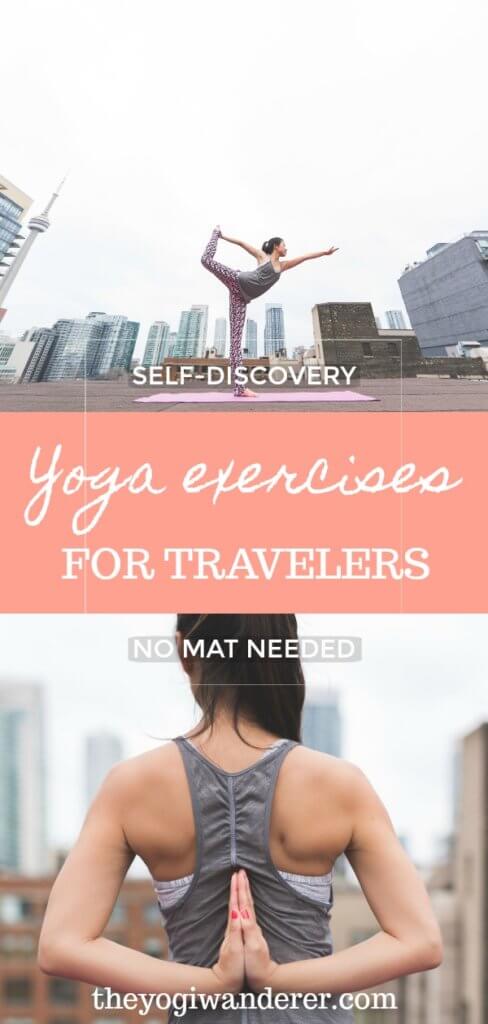
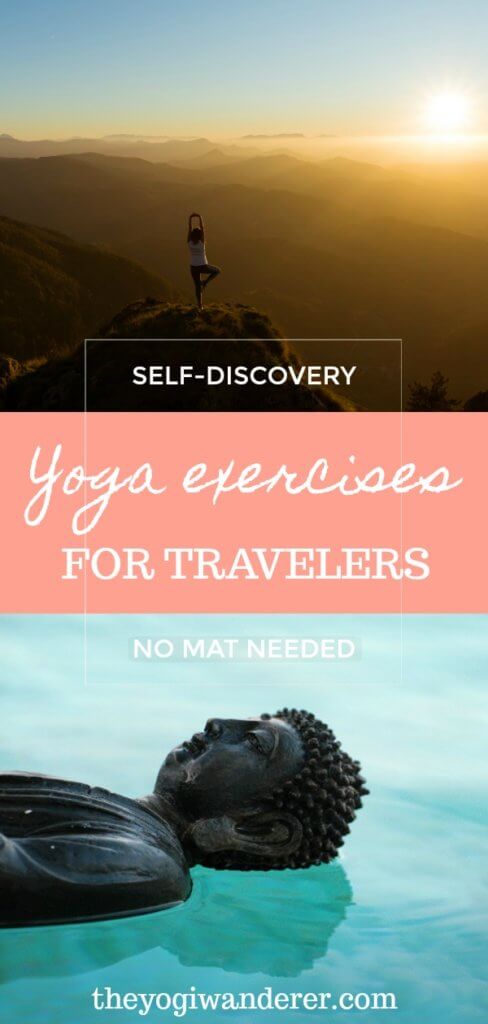
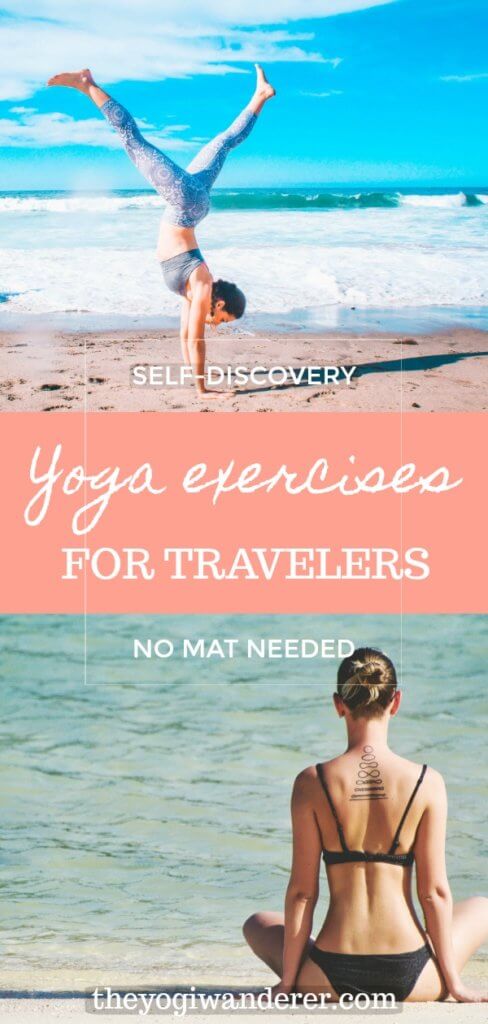
Tasha says
I’d love to start medtitating as I’d like to reduce my levels of stress and anxiety. Great tip focusing on the moon. Going to try that 🙂
Vanda says
Thanks Tasha! Let me know how it works for you 😉